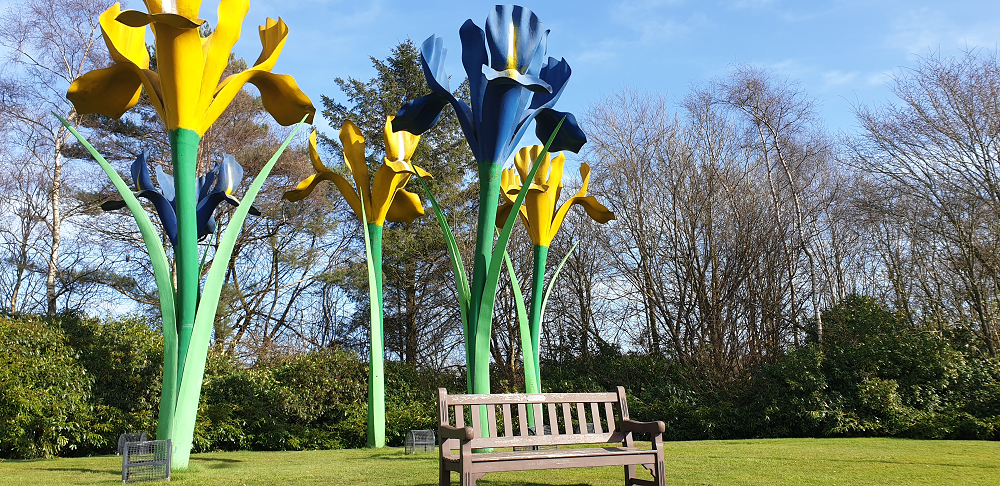
The Kingdom of Fife was once a Pictish kingdom called ‘Fib’ named after a mythological prince said to have been king of the Fib Kingdom for 24 years.
King James VI called Fife “a beggar’s mantle fringed with gold”. It’s a peninsula located between the Firth of Tay in the north, the Firth of Forth in the south and the North Sea in the east.
Glenrothes is a Fife town situated north-east of Edinburgh and south of Dundee, between the Leven and Eden valleys.
The name comes from a historical link with the Earl of Rothes, who owned much of the land on which the town has been built. Glen (from the Gaelic word gleann, meaning valley) was added to the name to avoid confusion with Rothes in Moray and in recognition that the town lies in a river valley.
The motto of Glenrothes is Ex Terra Vis, meaning ‘from the earth comes life’, which dates back to the founding of the town.
Post-second world war
Six new towns in Scotland were designated between 1947 and 1973, mostly for the overspill population of Glasgow: East Kilbride (1947), Glenrothes (1948), Cumbernauld (1955), Livingston (1962) and Irvine (1966).
Planned as a post-second world war new town, Glenrothes was placed between the existing towns of Kinglassie, Leslie and the ancient Pictish capital of Markinch.
The land was mainly agricultural, dotted with small rural communities and the hamlets of Cadham and Woodside – established to house employees of the local paper mills. Other nearby villages include Coaltown of Balgonie, Milton of Balgonie and Thornton.
The original purpose of the new town was to accommodate workers for the Rothes ‘Super’ Colliery – officially opened by HM Queen Elizabeth II in 1957 with a hundred years of predicted reserves. With much embarrassment, it closed only five years later due to flooding problems and a decline in demand for coal.
Scotland’s Silicon Glen
Following the failure of the mine, Glenrothes developed as an important industrial centre in Scotland’s Silicon Glen between 1961 and 2000 with several major electronics and hi-tech companies setting up facilities in the town.
The local economy predominantly comprises financial and professional services, manufacturing and engineering industries, service sector, health and public sector.
Glenrothes is a major service centre containing the headquarters of Police Scotland Fife Division.
Glenrothes superseded Cupar as the administrative capital of Fife in 1975 with Fife Council now the town’s largest employer. Several organisations have their global headquarters in Glenrothes. Public services and service industries are also important to the town’s economy.
Major employment areas in Glenrothes include Bankhead, Eastfield (home of Itek House), Pentland Park, Queensway, Southfield, Viewfield, Westwood Park and Whitehill.
Since 1971, Glenrothes has shared strong cultural, social and church relations with Böblingen, its twin town – a city in Baden-Württemberg, Germany. Both compete in a twin town Olympiad every 3 years.
Public facilities
Much of the town centre floorspace is internalised within Fife’s largest shopping complex, the Kingdom Shopping Centre – the first phase of which, Lyon Square, opened in 1963.
Public facilities include a regional sports and leisure centre, major parks, a civic centre and theatre. Three 18-hole golf courses can be found at Balbirnie, Goatmilk and Leslie. Glenrothes College and Fife College merged to form the Adam Smith College in 2005.
The town has won multiple horticultural awards in the Beautiful Scotland and Britain in Bloom contests for the quality of its parks. The landscape provides residents and visitors with an abundance of open green spaces, a wealth of leisure facilities, a network of cycle paths and an amazing civic art trail featuring over 170 sculptures, murals, decorated tiles and poetic paths.
The main photograph for this article shows the huge Iris flowers at the Leslie roundabout near to Riverside Park. They were originally part of the Glasgow Garden Festival in 1988.
Transport links
Markinch station opened in 1874, it now acts as a railhead for Glenrothes, Methil and Leven. The Glenrothes with Thornton station opened in 1992 (the Thornton North Junction main line station had been lost in 1969 due to the Beeching Axe).
Completed in 1990, the A92 trunk road provides the principal access to the town, passing through Glenrothes and connecting it to the wider Scottish motorway and trunk road network.
A major bus station is located in the town centre providing regional and local services to surrounding settlements.
Fife Airport accomodates private planes, helicoptors, parachuting and gliding. In 1998, it was voted the best airfield in the United Kingdom by Flyer magazine.
Population growth
In 1755, the population of the parish of Kinglassie was 998, the population of the parish of Leslie was 1,130 and the population of the parish of Markinch was 2,188.
Fast forward to 1960 and the new town population stood at 12,499. Present day Glenrothes is the third largest settlement in Fife and the 18th most populous settlement in Scotland standing at 39,277 in the 2011 census.
We are proud to call Glenrothes our home. Click HERE to find out what Itek House has to offer.
LATEST: New space now available at Itek House, click HERE to read about this fantastic new opportunity.